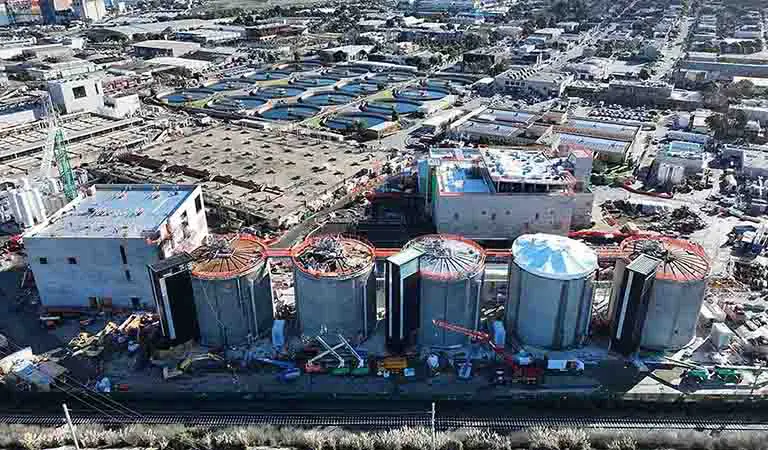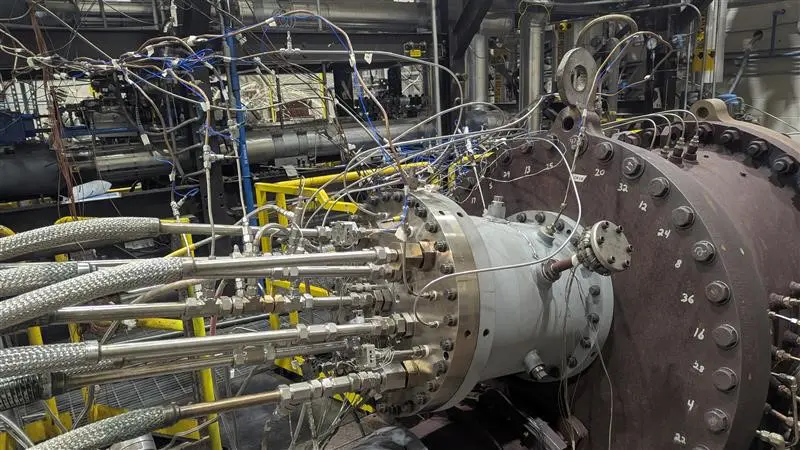
Pulse Of Planet Earth: Collision Course

This article was written by Paula DiPerna.
Just after midnight on March 26, 2024, a colossal cargo carrier loaded with shipping containers rammed into the Francis Scott Key Bridge in the Port of Baltimore in Maryland, causing the bridge to fall to pieces in seconds. A nearly half-a-century legacy vanished in an instant. The bridge had provided reliable service since it opened in 1977, carrying thousands of cars and trucks daily while ships of all sizes and types passed under the bridge without mishap.
What happened? An entirely unexpected event — a full electrical blackout on the carrier that knocked out its steering system, causing the ship to drift uncontrollably into a single footing of the bridge, thanks to the ineffable thrust and forward momentum the vessel had built up in just a few minutes. Miraculously, the pilot’s Mayday warning reached local police in time for them to stop traffic on the bridge, saving the lives of hundreds who might have been driving across it, but about a minute too late to warn the work crew busy on the bridge repairing potholes. Four workers were presumed dead at the time of this writing; two workers were saved. Why the workers didn’t receive the same warning at the same time on the same radio frequency as the traffic remains a haunting question in the investigation of the accident.
Heading In The Wrong Direction
Spanning 1.6 miles (2.6 km) across the Patapsco River, the Key bridge was critical economic infrastructure for the city of Baltimore, the state of Maryland, the United States, and, because of the global commercial role of the port, the world. The bridge came to be taken for granted as it facilitated the flow of goods and people, offering a seemingly eternal signature to the serenity of the harbor.
As I reflect on the state of balance between the power of our global economy and the ecosystems of our planet, I wonder if our economic “ship” is just like that gigantic vessel, losing its steering and heading straight into the support systems of our planet.
Nature is vital economic infrastructure, the visible and invisible processes and inputs that feed and enable every percentage of global gross domestic product (GDP). Without nature and planetary health, there is unmanageable economic disruption.
Like the container ship that hit the Key bridge, our economic systems are off course. We even have a metric to demonstrate the fact. According to the December 2023 “State of Finance for Nature” report from the United Nations Environmental Program (UNEP), “close toUS$7 trillion is invested globally each year in activities that have a direct negative impact on nature from both public and private sector sources — equivalent to roughly 7% of global GDP.”
Put another way, that is US$7 trillion plowing straight into the pillars of our planet. The report further states that this daunting figure “…is likely to be an underestimate given it includes only direct impacts.”
UNEP is calling for a major “turnaround” of financial flows, just as ships off their path need turning.
Can we do it?
As I wrote in my recent book, Pricing the Priceless… there are promising new financial tools precisely intended to shift capital away from endangering the planetary natural infrastructure and toward protecting it. These tools transcend the classical ESG and nature-based-solution investment buckets and extend to include direct investments in natural ecosystem infrastructure. The financial funding blueprint for these tools is humdrum to the financing of bridges, but exotic when it comes to nature.
For example, bridges are financed upfront by public and private sector investors, with integrated maintenance planning on the assumption the bridges will convey economic benefits later. No such financing theory applies to natural systems.
Flipping The Script
This gap is vivid in the case of the hard coral reef systems that buffer our coasts, providing the natural barriers that break wave force. We insure coastal property, valuing it highly, but we give zero value to the physical coral reef infrastructure that contributes to the value of the property by protecting it from storm fury. And since we don’t value the reefs, we don’t insure them or maintain them.
In the Mezo-American coral reef system, however, an innovative financial experiment has attempted to flip this false approach. The Mesoamerican Reef Rescue Initiative (MRRI) insurance program began in 2021, the first pilot year, pooling damage risks among four first pilot reef sites during the 2021 Atlantic hurricane season, expanded to seven in 2022, eventually covering 621 miles (1000 km) of tropical sea from the Yucatan Peninsula in Mexico to the Caribbean coast of Honduras.
Willis Towers Watson, the global insurance advisory firm and a pioneer in understanding environmental risks as insurance risks, co-funded the project. The project is based on the parametric insurance model, which triggers an insurance payout based on a predefined event rather than an actual loss, no questions asked. This process eliminates the laborious claims investigation or adjustment process. Insurance benefits, including cash payouts, begin when the triggering event occurs.
In the case of reef insurance, the triggering event is wind speed, since it is known that when wind speed reaches a certain level, seas will whip up and wave action is likely to damage underwater reefs.
In the MRRI plan, insurance payouts cover the costs of hiring, training, outfitting, and prepositioning coral reef restoration teams so that as soon as a storm passes and it’s safe, divers can hit the water and get busy trying to put Humpty Dumpty back together again.
In and out of coral nooks and crannies, divers use drills, rope, ribbon, and cement to repair and re-connect broken reef branches. If these fixes are made in time, hard coral can complete the re-fusion process. A Sisyphean task on the one hand, this kind of painstaking repair makes sense on the other. For protecting the world’s coral reef structures is now a hot race against time.
Creeping Barrage
According to “The Status of Coral Reefs of the World, 2020,” by the Intergovernmental International Coral Reef Initiative (ICRI) and the most current comprehensive report on the question, at least one-fifth to one-half of the world’s coral reefs are dead forever, killed off in the last 30 years by acidification and reef bleaching due to warming seas, direct toxic runoff, and physical destruction from various causes, including wild storms.
The pessimistic estimate is that unless these trends are reversed, coral reefs could be entirely gone from the earth by 2070 — a fleck in cosmic time and only about one generation of economic leadership away.
However, the situation is not yet hopeless. Coral reef regrowth is viable, and perhaps more so than previously assumed. In the March 2024 issue of Current Biology, Professor Ines D. Lange of the University of Exeter and colleagues undertook extensive study of global reef restoration projects and concluded, “While longer observation times are necessary to observe any self-organization ability of restored reefs [natural recruitment, resilience to thermal stress], we demonstrate the potential of large-scale, well-managed coral restoration projects to recover important ecosystem functions within only four years.”
So, if we can repair what’s broken, and combine physical restoration with laboratory breeding of more resilient coral types that can be re-seeded to the oceans, there’s a chance reef restoration can keep reasonable pace. But only a chance. Funding for coral reef restoration and insurance projects is infinitesimal compared to the flow of financing to fossil fuel development that continues to contribute to climate change, that in turn, leads to rising sea temperatures and extreme storms that are playing havoc with coral reefs.
Repairing the Key bridge in Baltimore is perhaps one of the most challenging tasks facing the US government in decades, requiring a military scale to pull back the wrecked ship, remove its cargo, clear the channel and, of course, rebuild the bridge — a true test of governmental wherewithal to meet a domestic engineering crisis. It’s even possible the US Presidential election will turn on whether the voting public perceives progress being made or not.
No one could have expected that cargo accident, but every day, everywhere, nature’s infrastructure — potable water, standing forests, pollination, water filtration, and arability of land — receive the same kind of direct hit as the Key bridge.
Traditional financial flows that use up and depend on nature are like a drifting vessel we do not clearly discern, yet we know it is out there on the sea. Today’s most significant challenge is to turn that ship away from its wrecking route in time.
About The Author
Paula DiPerna is widely published, a frequent global public speaker, media commentator, guest lecturer, and panelist. Her most recent book is Pricing the Priceless: The Financial Transformation to Value the Planet, Solve the Climate Crisis, and Protect Our Most Precious Assets. DiPerna currently serves as special advisor to CDP. She also serves on the Distinguished Advisory Board of the Integrity Council for the Voluntary Carbon Market (ICVCM) and the Sustainability Advisory Council of Jupiter Asset Management. DiPerna formerly served as President of CCX-International (Chicago Climate Exchange), which launched and operated the world’s first cap-and-trade system to address climate change. Opinions expressed are the author’s personal views.









